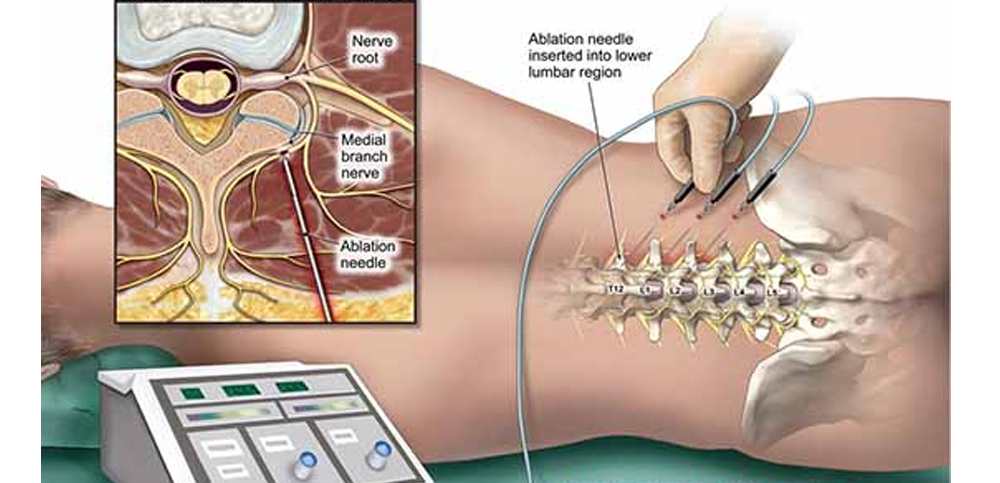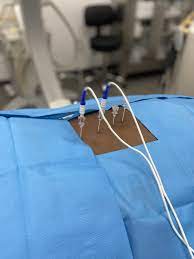What is
Radiofrequency Ablation


A radiofrequency ablation is an advanced pain management technique that can treat a variety of pain syndromes. The most common use of radiofrequency ablation is in the cervical spine and lumbar spine where the procedure is used to reduce pain from arthritic joints.
Radiofrequency ablation is a technique that uses heat to disable the pain-transmitting nerves in the spine.
The procedure is very safe and is only used on sensory nerves that transmit impulses. There is no risk of paralysis or weakness from the procedure. There is also another type of radiofrequency ablation called “pulsed” radiofrequency ablation. This procedure does not use heat to disable the nerve, and is appropriate for treating a wide variety of pain problems that originate in sensory nerves.
How does radiofrequency ablation relieve my pain?
Radiofrequency ablation uses heat to disable the pain-transmitting nerves in the spine. The process is similar to microwave ovens that use microwave energy to heat food. Radiofrequency energy is transmitted to the tip of a needle where it is converted to heat, which is applied directly to the nerve fibers. Once the nerves undergo this heat treatment, they slowly stop transmitting pain.
What happens during the procedure?
You will be placed on the treatment table. Then local anesthetics will be used during the procedure to further ensure your comfort. Following the procedure, you will be allowed to rest for approximately thirty minutes in the recovery area prior to discharge.
What is the anticipated recovery from the procedure?
Most patients have minimal difficulties with procedure. However, a very small percentage of patients develop “neuralgia” at the procedure site (especially in the cervical spine). These symptoms usually resolve.

How long does the procedure take?
Approximately 30 - 90 minutes.
